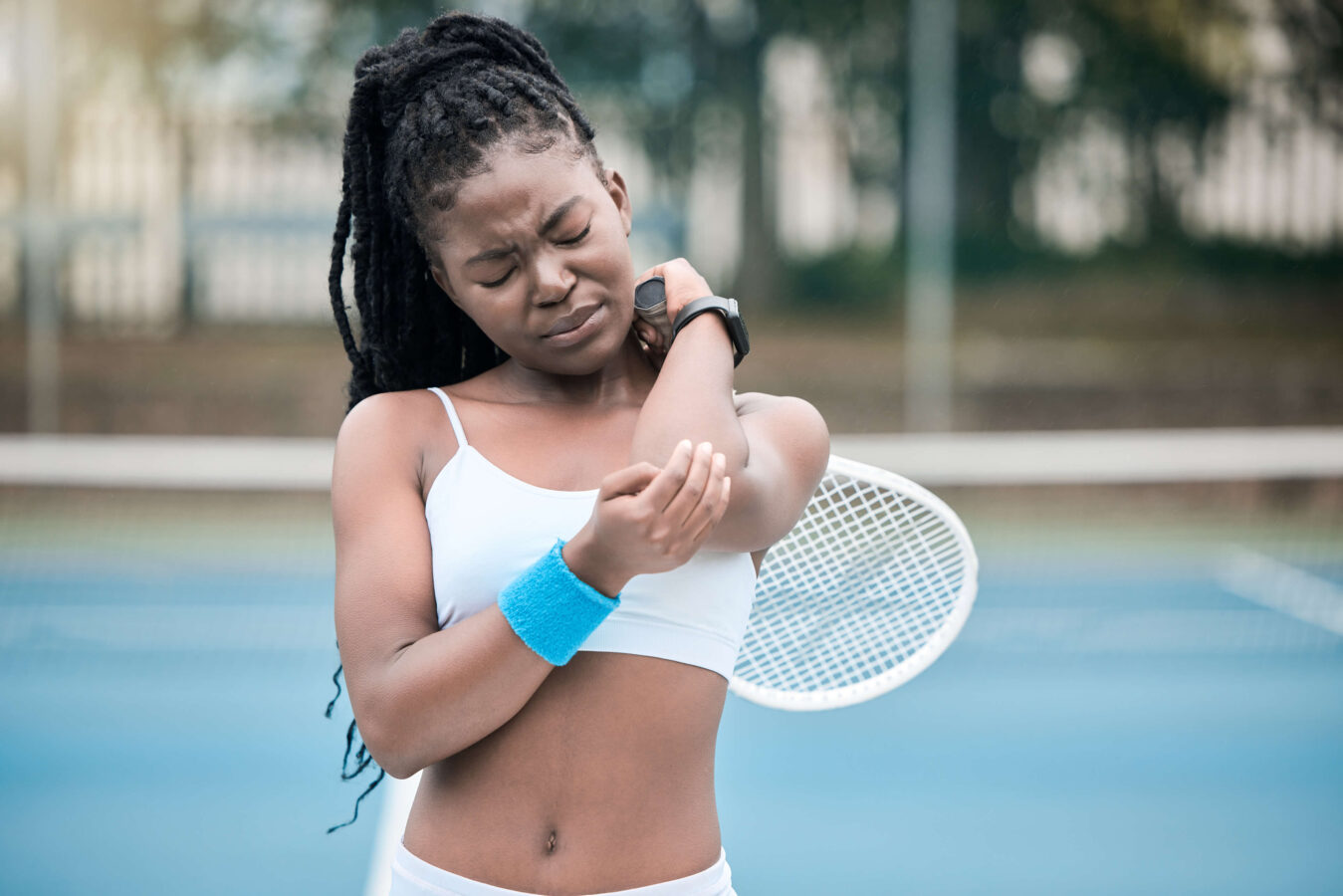
Medically reviewed by Misty Seidenburg
Pain on the inner side of the elbow is often a sign of an ulnar collateral ligament (UCL) injury. While UCL injuries are commonly associated with baseball pitchers and other athletes who repeatedly make an overhead arm motion, you can also get hurt from a single accident, like a fall. Learn more about UCL sprains and how to relieve nagging inner elbow pain with physical therapy.
The UCL is one of four elbow ligaments. It connects the upper arm bone (humerus) to the ulna bone of the forearm and helps stabilize and support the arm. Everyday activities do not generally stress the UCL, which is more frequently injured due to acute trauma or gradually stretched out with repetitive use.
Athletes who play sports that involve throwing or reaching overhead are at a higher risk of UCL damage.
These sports include:
Although most UCL injuries occur from overuse, particularly in athletes, anyone can experience a sprain from a single and sudden event, like a fall, motor vehicle accident, or contact sport.
The symptoms of a UCL injury depend on the severity of ligament damage. You may notice an immediate pop or tearing sensation with an acute injury.
Other signs of a UCL injury include:
Some individuals with UCL injuries only have pain while throwing and do not have discomfort during regular activities. See your provider for a diagnosis if you have any symptoms or suspect a UCL sprain. An untreated UCL injury can result in further complications, including stress fractures and nerve damage.
UCL sprains are classified by grade depending on the extent of the elbow injury.
A physical exam and imaging tests are used to determine the cause of inner elbow pain, the severity of the damage, and the appropriate course of treatment.
Minor UCL sprains can often be treated safely and effectively with nonsurgical methods. The P.E.A.C.E. & L.O.V.E. protocol for soft tissue injuries covers the whole continuum of rehabilitation for sprains, from initial protection and elevation of the affected limb—to gradual loading and a safe and supervised return to activity.
Once the elbow inflammation has decreased, physical therapy is often recommended to strengthen the muscles around the elbow, shoulder, and even the hips, which helps compensate for the injured UCL. Building strength in the upper back and shoulder also eases stress on the elbow joint throughout rehabilitation.
Therapeutic exercise and stretching, under the guidance of a licensed physical therapist, also improves range of motion and function in the elbow and surrounding structures. Physical therapists also use soft tissue mobilization and other manual therapies to relieve stiff, painful muscles and joints and make clients more comfortable.
In some cases, surgery is necessary to reconstruct the UCL. “Tommy John surgery” is named for Thomas Edward John Jr., a pro baseball player who sustained a severe arm injury that interrupted his 1974 season.
When the team surgeon, Dr. Frank Jobe, began surgery to repair John’s UCL, he discovered the ligament was not salvageable. Jobe harvested a ligament from the pitcher’s wrist as a UCL substitute, making medical history and saving John’s career. Before this ground-breaking surgery, a “dead arm” was a career-ending baseball injury.
Tommy John surgery has since become the most prevalent procedure for young athletes, especially among children ages 15-19. At the professional level, 35% of MLB pitchers have had the surgery, according to data from 2023.
Whether you are preparing for Tommy John surgery or rehabbing from the procedure, physical therapy can help you achieve a good outcome and return to play safely. UCL sprain recovery time ranges from four to six weeks for mild injuries to up to nine months to a year or longer when surgery is necessary.
While it may be frustrating to be on the sidelines, progressive rehabilitation with a physical therapist is essential to protect the healing tissue, prevent further injury, and improve your overall outcome. Research shows that physical therapy and other nonoperative treatments are successful in helping the majority of athletes with grade 1 and grade 2 tears return to play after UCL injuries.
While a fall or other sudden trauma to the elbow cannot be predicted, sprains and other overuse injuries can often be prevented with proper training and conditioning.
Here are some tips to reduce overuse injuries:
Committing to a balanced fitness program is one of the best ways to prevent sports injuries. Your physical therapist creates a personalized exercise and stretching program based on your unique needs and goals.
A sports therapy plan includes cardiovascular exercise and movements to increase strength and flexibility. This not only helps you play safely—but also prepares you to perform at your very best. To learn more about sports physical therapy, request an appointment online or find a physical therapy clinic near you.
Request your physical therapy appointment
Experience individualized treatment at one of our premier clinics. Request your appointment with BenchMark Physical Therapy now.